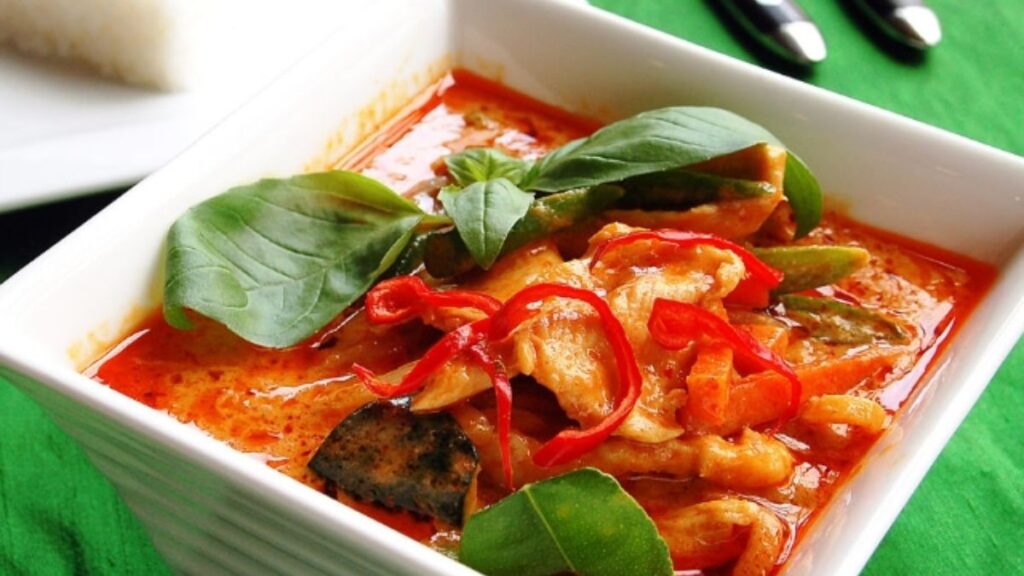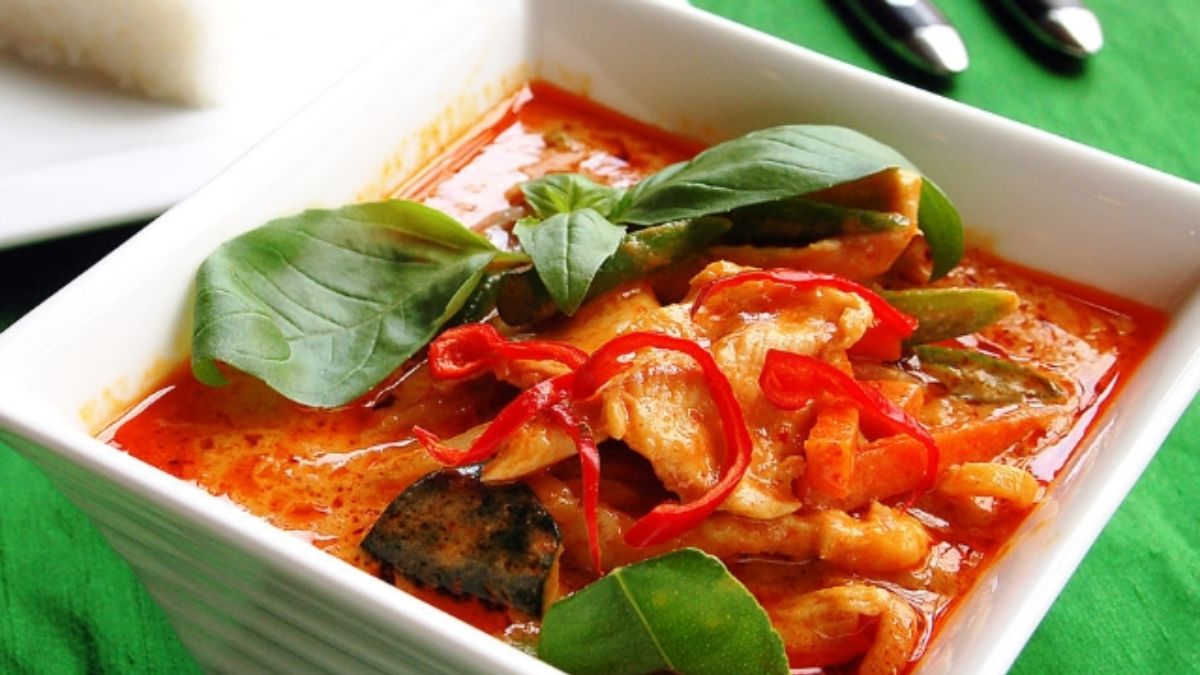All About Gaeng daeng ( Best Thai Red Curry )
Gaeng daeng, also known as red curry, is a popular dish in Thai cuisine that is loved for its bold flavours and aromatic spices. This dish is typically made with a red curry paste that is made from a blend of red chilies, garlic, lemongrass, shallots, and various other herbs and spices. The curry paste is then mixed with coconut milk, which gives the dish its creamy and flavourful base.

Gaeng daeng (red curry) is a traditional Thai dish that has been served for centuries. The dish originated in the 14th century, when it was first cooked by the Mon people of what is now Central Thailand. The Mon people used a variety of ingredients, such as chilies, garlic, galangal, lemongrass, shrimp paste, and other herbs and spices to flavor the curry.
The dish eventually spread throughout the region and by the late 1800s, red curry had become popular in Bangkok and other parts of Thailand. Over the years, the dish evolved and different ingredients were added to the curry to give it more flavor and texture. In the early 1900s, red curry started to be served in Thai restaurants and soon became a popular dish all over the world.
Today, the dish is made with coconut milk, red curry paste, and a variety of vegetables, meats, and seafood. Gaeng daeng is typically served with steamed jasmine rice and is often garnished with fresh basil, kaffir lime leaves, and red chili peppers.
Gaeng daeng is typically served with a protein, such as chicken, beef, or tofu, and vegetables such as bell peppers, bamboo shoots, and Thai eggplants. It is also often garnished with fresh herbs, such as cilantro and basil, to add a burst of flavor.
One of the unique aspects of gaeng daeng is the use of kaffir lime leaves, which are a key ingredient in many Thai dishes. These leaves have a unique aroma and flavor that adds depth and complexity to the dish. They are often used in the curry paste, as well as added whole to the dish while it is cooking.
In addition to kaffir lime leaves, gaeng daeng also uses a variety of other aromatic spices, such as cumin, coriander, and cardamom. These spices help to balance out the heat of the red chilies and add a depth of flavor to the dish.
One of the best things about gaeng daeng is that it is incredibly versatile and can be customized to your taste preferences. If you like your curry extra spicy, you can add more red curry paste to the dish. If you prefer a more mild flavor, you can use less curry paste or add more coconut milk to balance out the heat.
Gaeng daeng is also a great dish for those who are looking to add more plant-based options to their diet. Tofu is a common protein used in gaeng daeng, and you can also add a variety of vegetables, such as bell peppers, bamboo shoots, and eggplants, to make the dish more filling and satisfying.
If you’re looking to make gaeng daeng at home, it’s actually quite easy to do. You can purchase red curry paste at most Asian markets or online, or you can also make your own paste from scratch if you prefer. To make the curry paste, you’ll need to blend together red chilies, garlic, lemongrass, shallots, and various other herbs and spices in a blender or food processor.
To make the curry, you’ll start by heating some oil in a pan and adding in the curry paste. Let it cook for a few minutes until it becomes fragrant, then add in your protein of choice and vegetables. Pour in some coconut milk and let the curry simmer until everything is cooked through.
Serve the gaeng daeng over a bed of steamed rice or with some crusty bread to soak up all of the flavorful sauce. Garnish with fresh herbs and a squeeze of lime juice for an extra burst of flavor.
Overall, gaeng daeng is a delicious and flavourful dish that is sure to become a favourite in your home. Its bold spices and aromatic flavours make it a perfect choice for those who love Thai cuisine, and it’s also a great way to add more plant-based options to your diet. So next time you’re in the mood for something bold and flavourful, give gaeng daeng a try – you won’t be disappointed!
Follow for more Bakasur …

